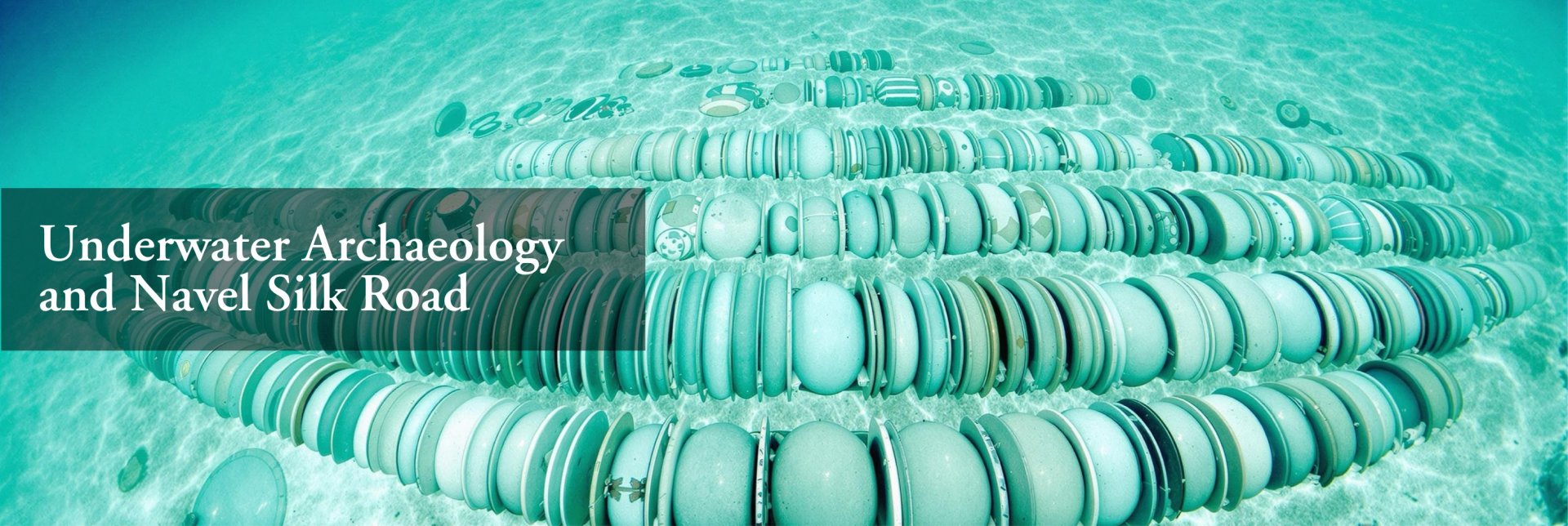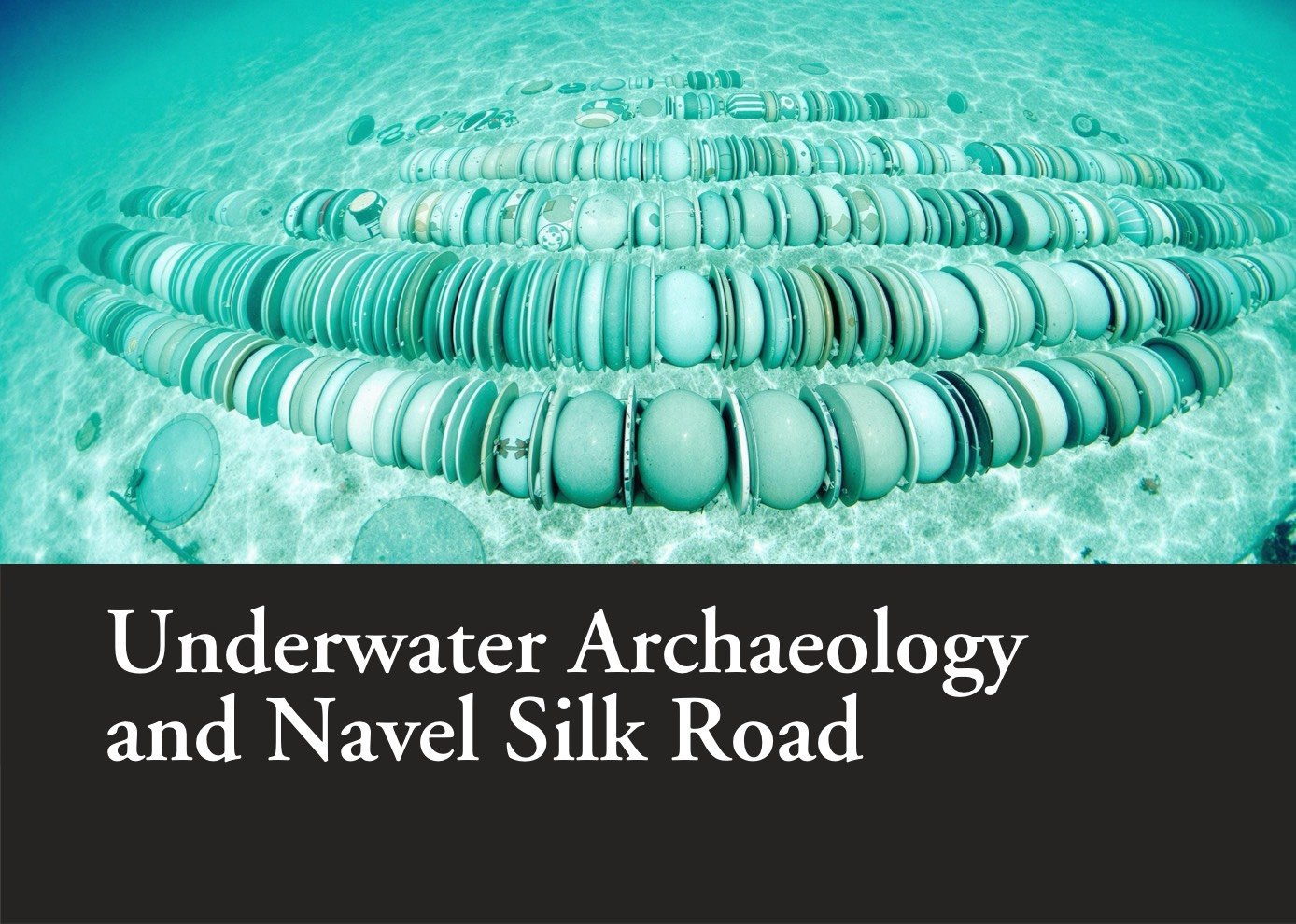Underwater Archaeology and Navel Silk Road
In mass media (such as movies or novels), sometimes the scene of seeking treasures in the sea, which is usually depicted with mystery and convoluted storylines piled up with romance and images of gold, silver and treasures. This makes people misunderstand that underwater archaeology is no different from seeking treasures under the sea, and even wrongly equate wreck raising as underwater archaeology. Needless to say, such treasure hunts sometimes happen in reality. For example, in late 1980s, and English Man Michael Hatcher was extremely active in hunting for treasures in South China Sea1 and shocked Chinese archaeological circles. However, such acts are by no means equate underwater archaeology.
(1) What is underwater archaeology?
Underwater archaeology is a branch of archaeology. This is the extension of field work of archaeology on land to archaeology at the sea. The research object of underwater archaeology is to investigate heritage under the sea, for example, investigations, examinations and excavations of the ancient heritage sites and objects that were submerged by water (e.g., river, streams, lakes, and the sea), maximizing the function of research methods and perspectives from the discipline of archeology through applying them in answering research questions. Therefore, treasure hunt activities, which are mainly applying speedy yet destructive ways for obtaining underwater treasures in pursuits of monetary purposes, should not be regarded as underwater archaeology.2
Underwater relics, such as metal objects and porcelains, are an important component in underwater heritage, which pay a significant role in promoting public awareness over the importance of underwater heritage, as well as advocating international collaboration in heritage protection. Therefore, UNESCO passed the Convention on the Protection of the Underwater Cultural Heritage in 2001 (date of effect: 2009). The convention has a very concrete definition of underwater heritage in terms of time frame, types of objects, and status of heritage, etc.
According to the convention, underwater cultural heritage means all traces of human existence having a cultural, historical, or archaeological character which have been partially or totally under water, periodically or continuously, for at least 100 years, for examples:
(i). Sites, structures, buildings, artefacts and human remains, together with their archaeological and natural context;
(ii). Vessels, aircraft, other vehicles or any part thereof, their cargo or other contents, together with their archaeological and natural context;
(iii). Objects of prehistoric character.
(b). pipelines and cables placed on the seabed shall not be considered as underwater cultural heritage;
(c). installations other than pipelines and cables, placed on the seabed and still in use, shall not be considered as underwater cultural heritage.
There are controversies over the deed of the convention. Therefore, not all countries sign and agree to this convention. Some countries which oppose the convention established their own regulations to protect their underwater cultural heritage. For example, in China, underwater heritage is protected through the public consultation on Protocols on investigation in underwater archaeology (《水下考古工作規程》)3 and Regulation of the People's Republic of China on the Administration of the Protection of Underwater Cultural Relics (《中華人民共和國水下文物保護管理條例》)4.

(2) Working procedures of Underwater Archaeology
Similar to archaeology on land, the working procedures of underwater archaeology range from setting up research projects, collecting literature review, on site pilot investigation, salvaging, placement and storage of salvaged cultural heritage, research, publications of research report, and public exhibitions. Nonetheless, the work routine of underwater archaeology is a far cry from that of archaeology on land because of the limitations in the underwater environment.
The first problem is arisen from natural environment. Underwater archaeology is limited by the situation of the nature, for examples, water flow, visibility under water, tidal changes, influx of underwater animals, underwater pressures. Therefore, underwater archaeology can be easily affected. Maybe only less than 100 days in a year are suitable for underwater work. Also, researchers’ work is restricted by the conditions in diving, for examples, timing, the reserve of oxygen, and depth of diving, which involve the dive theory.
The second problem is associated with physical limitations of human beings. In underwater environment (no matter under river and lakes, or under the ocean), human beings cannot survive without utilizing suitable devices. Therefore, researchers much know how to use these diving devices, which is extremely important for their survival and the efficiency of their research w. Third, underwater archaeology involves numerous operations of complicated devices for exploration and salvaging. These devices include sonar devices, multibeam devices, robotics, and sub-bottom profilers etc.
Therefore, in underwater archaeological research, it will take a long period of time and a lot of resources in preparation work for literature review as well as pilot exploration so that one could detect the location more accurately. This will greatly reduce the time needed for salvage work.


The term Naval Silk Road (海上絲綢之路) is often been mentioned recently. This is a recent academic concept, which is applied differently, e.g., time frame, geographical span, nature of navigation. Also, this is an inter-disciplinary research topic involving many disciplines, e.g., history of transportation, history of economics. Nonetheless, there are limitations from existing literature, and Chinese ancient texts’ descriptions are often very brief.
Underlying archaeology is the key for the archeologists to understand ancient naval silk road. In Chinese seashores, and even nearby countries in Southeast Asia, many ancient Chinese sunken ships were identified. Through the salvage and archaeological work for these sunken ships, one would understand the sea routes, types of commodities in ancient commerce, and ancient technology in shipbuilding etc.
The sunken ship of Yuan Dynasty (1276-1368) discovered in San Dao Gang village (三道崗) in Sui Zhong county (綏中) of Liaoning province (遼寧省) 5demonstrated the significance of underwater archaeology. Through exploration and salvaging, cultural heritage including iron works and porcelains were discovered. Majority of them were porcelains, which are probably the products of Cizhou kilns (磁州窯). The location of shipwreck suggested that the Naval Silk Road is not only heading southward, but also have a route northward, indicating that Chinese mainland dynasties had commerce with Korean Peninsula, various islands of Japan, and even other places in North-Eastern Asia, with porcelain as one of the most important commodities.
Among all sunken ships identified in Chinese territorial waters that have undergone underwater archeological investigation, porcelain is the most common commodity. For example, Nanhan No.1 (南海一號6), which is the most famous sunken ship, was a ship belonging to Southern Song dynasty (1127-1279) which was discovered in 1980s. After years of investigation and salvaging, the ship was moved to Chinese museum of Naval Silk Road (中國海上絲路博物館, nick named “The Crystal Palace” 水晶宮) for continuing research and investigation. At present, over 180000 pieces of cultural relics were found in the ship, and many porcelains were made in famous porcelain kilns in China, for example, from Lung Chuan (龍泉), De Hua (德化), and Jing De (景德). There are huge varieties in porcelain, which has an exceptional high value for future research. The examples are as follows:

(Original photo provided by Steve Chan Loi-Fat 陳來發from Institute of Hong Kong Underwater Archaeology Research)

(Original photo provided by Steve Chan Loi-Fat 陳來發from Institute of Hong Kong Underwater Archology Research)
Therefore, Japanese scholar Mikami Tsugio (1907-1987) proposed to rename Naval Silk Road as “Porcelain Road”7. In fact, we found that porcelain is not the only cultural relics discovered in these sunken ships. Some cultural relics were easily degenerated in water, thus it was hard to find those relics, for example, tea, silk, and spices in ships. However, in special cases when these commodities were stored in special environment, one could find such commodities. For example, in the sunken ship discovered in Chi Nian village 后渚 of Quanzhou 泉州 in Fujian province 福建省, a lot of “fragrant medicine”(香藥) was discovered. It was later discovered from the scientific analysis that this might be a type of frankincense originated in Somalia. Also, large amount of other types of fragrances such as agarwood (沉香), rosewood (降真香) and ambergris (龍涎香) were discovered8. Therefore, such discoveries from underwater archaeology suggested that types of commodities in Naval Silk Road is associated with different funeral practices in different historical periods.
Shipwreck was only one of the research objects in underwater archaeology but is not the whole of it. For example, portal heritage in seashore is also an important aspect in underwater archaeological work for Naval Silk Road. For example, Quanzhou (泉州) was enlisted into UNESCO cultural heritage in 2021 for its role as the international centre of sea commerce in Song and Yuan dynasties China. Among them 22 heritage sites including piers, kiln, shrines, and temples, were included in the list. It is highly probable that Quanzhou is the starting point of Naval Silk Road.

A famous Liang-Shi bridge (梁式橋) across the sea. This is one of the 22 signature heritage sites of Quanzhou.
Shipwreck is one of the most important research objects of underwater archaeology, and underwater archaeology is the key for investigating the history of Naval Silk Road. China owns over 300 km square of sea territory, therefore investigation in this vast area is extremely difficulty. Due to the late beginning of underwater archaeology, there are a lot of missing sunken ships buried in the sea that require further investigations and discoveries. Taking the statistics from National Cultural Heritage Administration, “so far we have found 241 sites for underwater archaeology (not including the statistics in Hong Kong, Macau and Taiwan), a majority of them are sites of shipwreck.” Also, due to the limitations of sea diving technologies, we believe that there are still many undiscovered sites for future investigation. Another challenge for underwater archaeologists is the dangerous and harsh working environment, which needs tremendous effort to overcome.

Note:
Institute of Hong Kong Underwater Archaeology Research (中國香港水下考古文化研究會) was established in 2019. The chairperson is Tseung Pak Long (蔣白浪). The vice-chairpersons are Wong Ting-Kwok (黃定國) and Toby C.L. To (杜智禮). The head consultant is Steve Chan Loi-Fat (陳來發).
The author would like to thank Mr. Wong Ting-Kwok for his advice related to diving, and Mr. Steve Chan Loi-Fat for providing the original photos of porcelain discovered in Nanhai No.1. The photos provided by the author are snapshots of scenarios of training and archaeological work by the members of the Institute of Hong Kong Underwater Archaeology Research.
Reference:
1.〈宋建忠︰《中國沉船考古發現與研究》,科學出版社,2021年,第2頁。
2.航海考古學會 著(Nautical Archaeology Society),阿曼達‧鮑恩斯 編(Amanda Bowens),國家文物局水下文化遺產保護中心 譯︰《水下考古原理與實踐之NAS指南》(第二版),文物出版社,2018年,第9頁。
3.國家文物局就《水下考古工作規程》公開徵詢意見,2011年10月12日。
4.中華人民共和國國務院令,第751號,2022年4月1日起實施。
5.孫鍵︰《綏中三道崗元代沉船的發現》,《國際博物館(中文版)》,2008年,第4期。
6.國家文物局水下文化遺產保護中心︰《南海I號沉船考古報告之一︰1989-2004年調查》,文物出版社,2017年。國家文物局水下文化遺產保護中心︰《南海I號沉船考古報告之二︰2014-2015年發掘》,文物出版社,2018年。
7.(日)三上次男 著,李錫經、高吉美 譯,蔡伯英校訂︰《陶瓷之路》,文物出版社,1984年,第155頁。
8.福建泉州海外交通史博物館︰《泉州灣宋代海船發掘與研究》,海洋出版社,2017年。
9. 國家文物局考古研究中心:《乘風破浪砥礪前行—寫在修訂後的<中華人民共和國水下文物保護管理條例>施行之際,2022年4月1日,國家文物局官方網頁。
All articles/videos are prohibited from reproducing without the permission of the copyright holder.




Welcome to leave a message:
Please Sign In/Sign Up as a member and leave a message